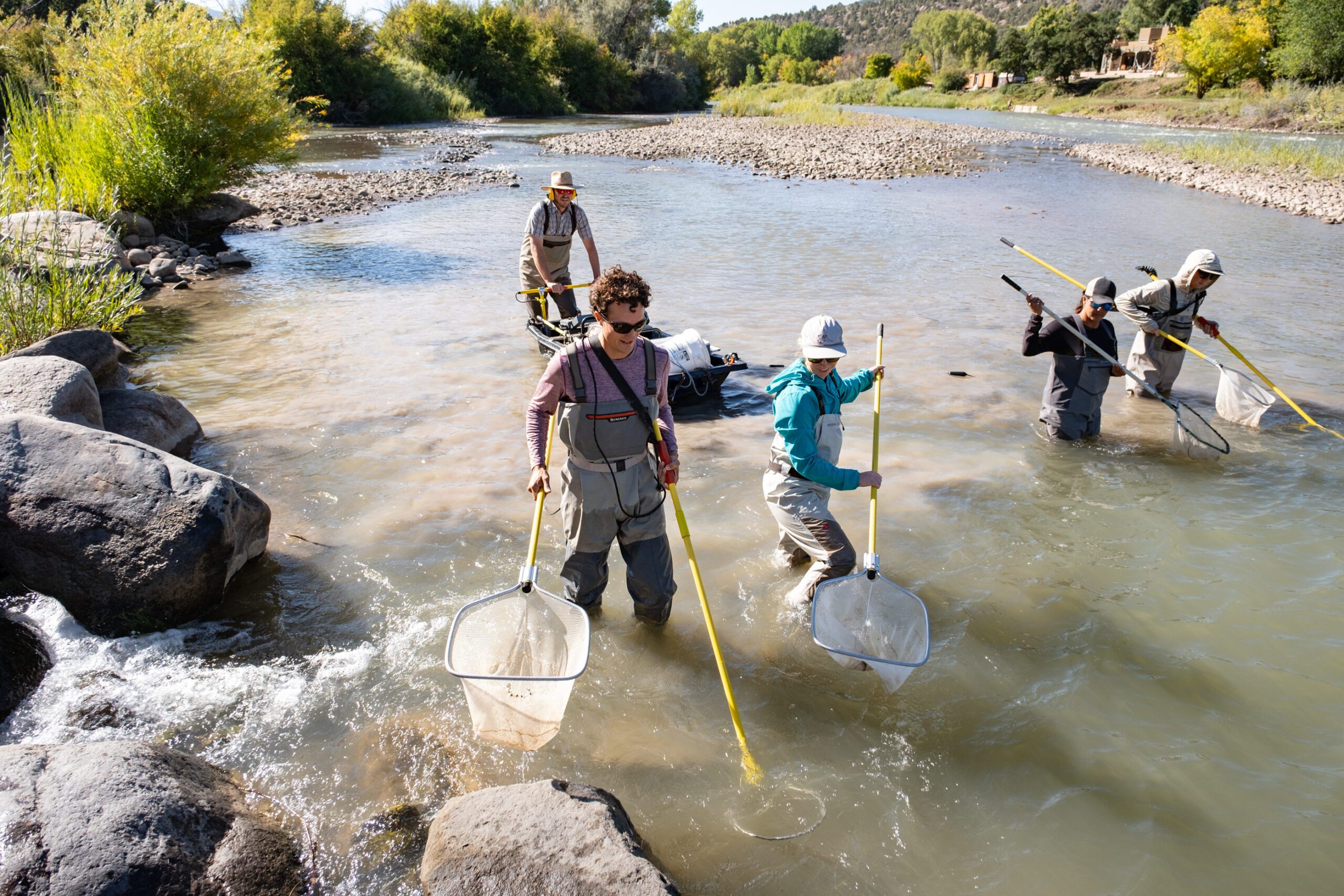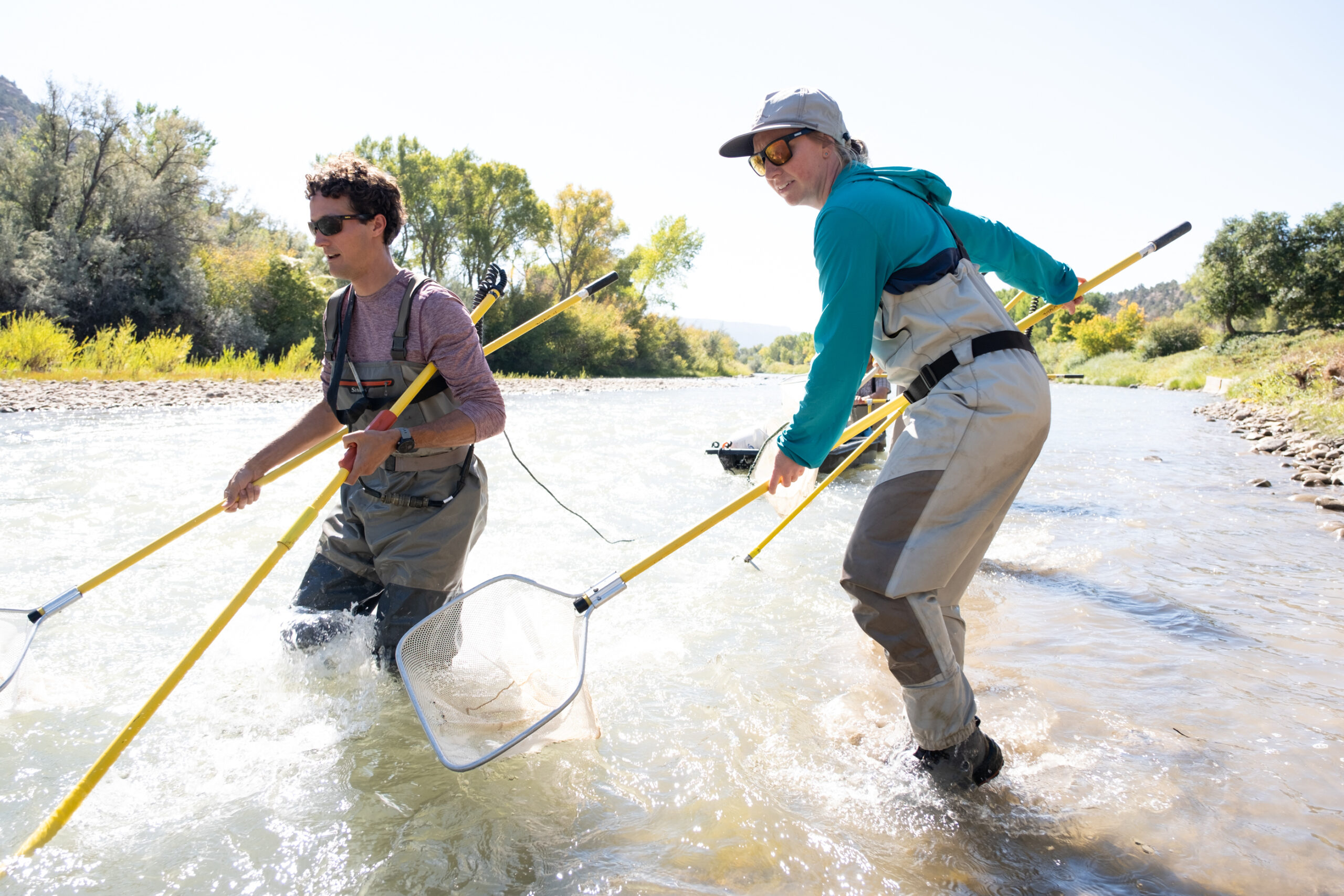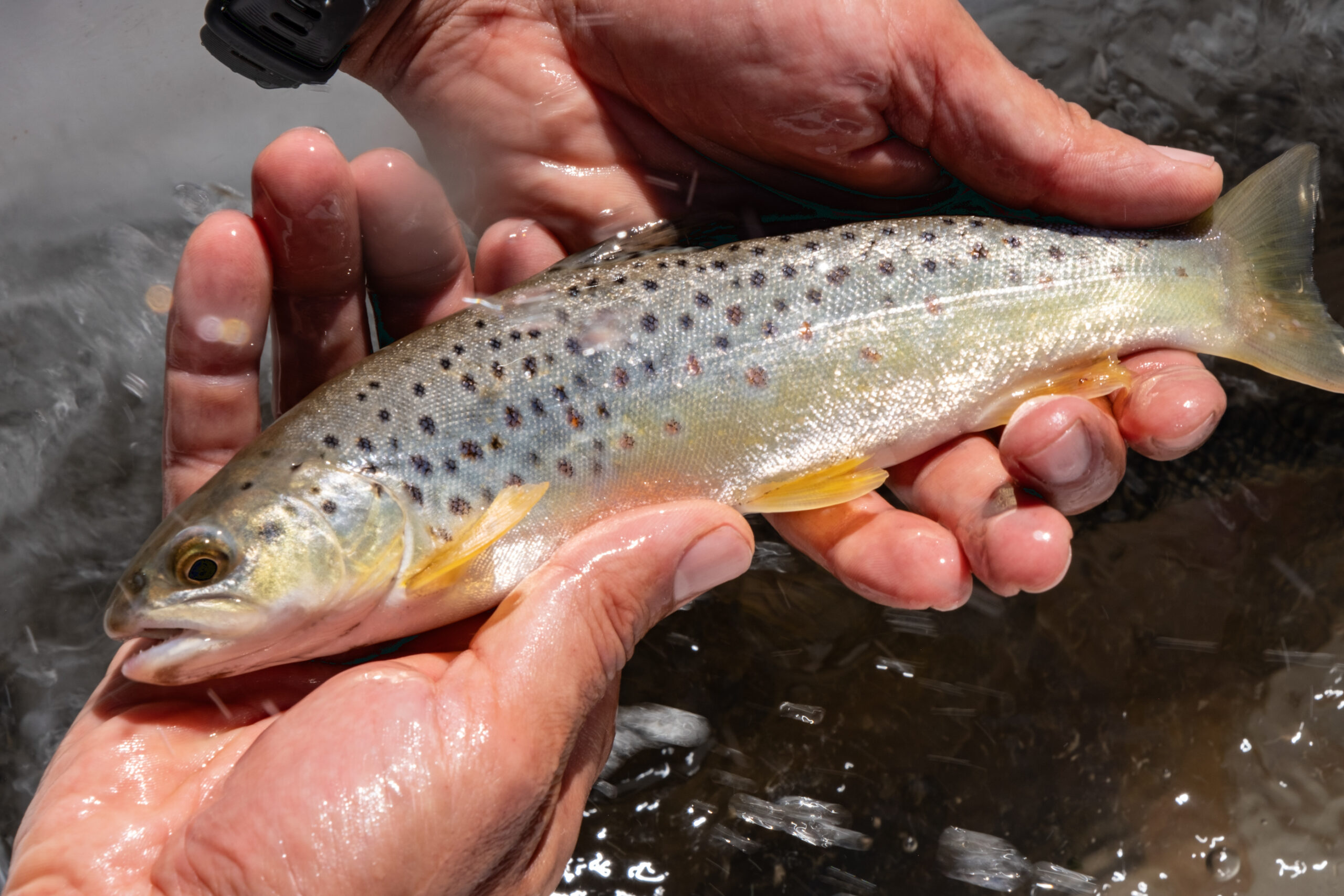Environmental Programs and Wildlife team up on Animas River




On a sunny autumn morning in late September, a medium sized barge is lifted out of Danielle Austin’s white Ford truck on the banks of the Animas River where the soil is somewhat loamy, and the water no longer runs clear. Scientists and wildlife technicians from the Southern Ute Indian Tribe’s Department of Natural Resources and Justice and Regulatory have teamed up for a day of fishing on the Animas River.
The Tribe’s Environmental Programs Division (EPD) and Wildlife staff set out to harvest a variety of fish species using tried and true electroshocking techniques, which enables them to net a wide variety of fish, to be sorted and released back into the river — keeping only the specific species and the ideal sizes of fish needed for trace metals testing at a lab.
“As part of the Animas River Monitoring Program, funded by WIIN (Water Infrastructure Improvements for the Nation) grants, EPD is conducting a three-year study in order to determine if trace metals, polycyclic aromatic hydrocarbons (PAHs), and polychlorinated biphenyls (PCBs) are present in the tissues of fish found in the Animas and Florida Rivers,” Water Quality Scientist, Jillian Kugle said.
“With the help of Southern Ute Wildlife Division, fish are collected using electroshocking techniques and only fish that meet certain criteria are collected, while the rest are released back into the rivers. The purpose of this study is to determine whether these contaminants are bioaccumulating in fish in the Animas and Florida Rivers.”
Bluehead Sucker (a native species), Flannelmouth Sucker, Mottled Sculpin and Brown Trout were among the fish species collected on the river that morning using the barge shocker. Waterflows were waist deep and some of the larger fish were gravitating to the faster flow areas; working in unison, the team was able to fan out and capture several fish with each pass. Fish were collected in a live well, where they were measured and recorded prior to release.
“We want to look at the tribal lands and waters in a holistic way, and we are happy that we can work alongside the EPD staff and provide the unique skills and equipment for their monitoring,” Southern Ute Wildlife Technician, Jon Broholm said. “It fits in with our long-term management goals, which include recovery of native species, and maintaining trout populations in the rivers for fishing.”
“It supports those evergreen management goals that we have,” Broholm said. “Environmental Programs has done these sorts of samplings on a yearly basis over the past several years, which gives us data on how fish use habitats and the population trends that occur over time, which is important to the Southern Ute Wildlife Division.”
What the Tribe is doing also ties into the San Juan River Basin Recovery Implementation Program, which was established by a cooperative agreement by various federal, state, and tribal entities.
“The Recovery Program was established through a cooperative agreement in 1992 and currently includes signatories from Colorado, New Mexico, U.S. Fish and Wildlife Service, U.S. Bureau of Reclamation, U.S. Bureau of Land Management, U.S. Bureau of Indian Affairs, the Ute Mountain Ute Tribe, the Southern Ute Indian Tribe, the Jicarilla Apache Nation, and the Navajo Nation,” according to the U.S. Fish and Wildlife Department. “The Recovery Program’s goals are to recover the listed and Colorado Pikeminnow (Ptychocheilus lucius) and Razorback Sucker (Xyrauchen texanus), while new and existing water development projects continue in compliance with state, tribal and federal law on the San Juan River.”
The Recovery Program consists of partners who are committed to the recovery of fish species listed under the U.S. Endangered Species Act and in addition to the signatories listed above, which include water users and conservation groups. According to their website, each Recovery Program partner participates in both a Coordination and Biology committee and the committees are responsible for designing, implementing, and evaluating recovery actions.
Due to sampling delays on the Florida River, the Tribe’s Environmental Programs Division is still awaiting the results for the fish tissue that was collected earlier this year. Once that data is received, those results will be verified and interpreted so that any information on bioaccumulation levels can be shared publicly.
One thing that is known is that fish species in this region are resilient, and historically, trace metals are present due to the nature of the headwaters of the Animas River and its tributaries, which flow out of the craggy mineral laden peaks just north of the Southern Ute Reservation. The questions to be answered are how much — if at all, metal levels are currently impacting aquatic species and fish populations, and if these effects move up the food chain.




